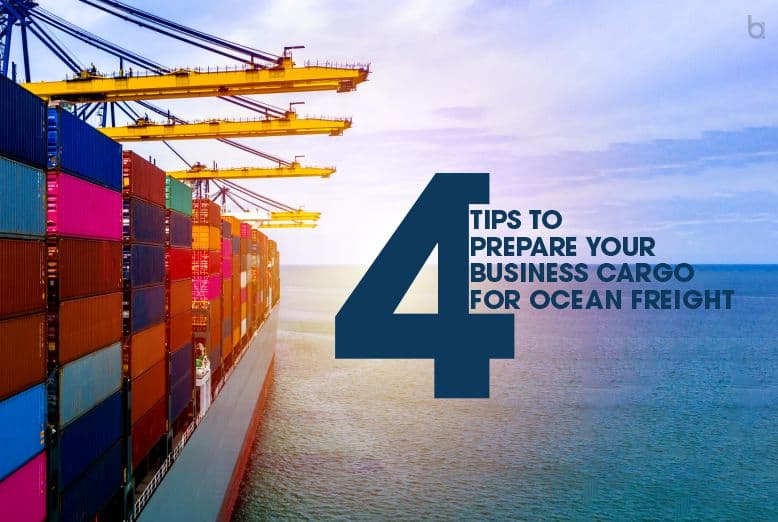Ocean freight is often used to transport high volumes of commercial products every day all around the globe. To meet the continuing demand of manufacturers creating consumer products and stock orders from manufacturing consumer goods, a robust freight transportation infrastructure is in place.
To ensure customers get merchandise in the finest shape, company owners should pack items destined for maritime freight correctly. Below, you can find some suggestions to streamline your marine freight procedure in preparing your business cargo:
1. Protect Your Cargo From The Pressure Of Ocean Freight
Seaborne trade accounts for the bulk of world trade. As a result, cargo damage is almost unavoidable. To help avoid cargo damage during maritime transportation, here are some tips:
• Proper stacking: Safeguard your company assets by using quality stackable. Take note that other items travel alongside your company goods when you send consolidated or group cargo. Therefore, you need to ensure your products and any other things that may be stacked on top won’t sustain cargo damage.
• Anticipate handling issues: Since overseas shipments require forklifts to load and unload products, stabilize your products so they can handle sea motions, including swaying, heaving, surging, rolling, yawing, and pitching.
• Label your cargo properly: Depending on the company products you’re sending, stacking may not be an option. This means that you should correctly palletize goods and avoid stacking pallets. Notify the freight forwarder when you make the reservation. Additionally, you should mark all sides of the boxes with ‘unstackable.’ Also, if the boxes or containers contain fragile commercial products, ensure that they have the ‘fragile’ sign or label.
To have peace of mind, you can get marine cargo insurance which protects against any loss, damage, or theft of your merchandise. At the same time, your business cargo will be transported over land and across the water. Having business insurance can help you avoid possible damages, the expense of replacing an item, and even complete loss.
2. Choose The Parcel Packaging According To Weight
It’s critical to weigh your goods so you can choose a parcel packaging that’s suitable for your cargo’s weight and size. Choosing a box or crate that’s unable to hold the weight of the item increases the risk of damaged packing and accidents during transportation. This is especially important when shipping large or heavy items that need special boxes or crates and protection intended to transport bulk materials.
Having the proper packaging guarantees that your cargo will safely reach their destination, making it a wise decision than settling for substandard packaging that ‘does the job’ but falls short once the customer gets the item.
3. Use Internal Packaging And Taping
Internal packaging is essential, therefore, neglecting crated package boxes for your products is unacceptable. Filling unused space with air cushions is a great method to pack large boxes since it can reduce the amount of space left in the container for smaller items.
Whether your box is durable or not, putting delicate, liquid, or small items inside increases the chance of harm. Also, it’s important to remember that the items may be tossed from side to side if they’re carried over a long distance or handled by a vast number of freights.
4. Make The Packaging Properly
If your business ships products internationally, double-walled boxes should become the new norm. This packaging provides excellent protection against shipment damage, making it worth the expense.
Since they can be piled on top of one another and come in a variety of weights and sizes capacities, cardboard boxes are an ideal way for businesses looking to reduce the likelihood of returns.
Even if you’re carrying large goods, you should use a box or pallet wherever possible. This will assist your heavier goods by strengthening their structural integrity and better prepare them for international shipping. These extra protections may be assisted by using paperboards or edge protectors, which will prolong the life of your goods.
Shrink wrapping and strapping your items together as part of a complete or partial shipment may also be an efficient method of packaging goods that have been packed or palletized. Additionally, shrink packaging guards against damage caused by environmental and weather factors during shipping.
Conclusion
Fragile products may suffer more damage in long-distance transportation, especially if the area around them is incomplete even though the crates are solid. To help prepare your business cargo for sea freight, choose top-quality bulk-container liners or logistics and ship goods carefully. It’s also recommended to label all of your commercial goods appropriately. With good planning and preparation from packaging, shipping to inventory management, ocean freight shipment of business cargo can be successful.
Also Read:- 7 Business Benefits Of API Integration













